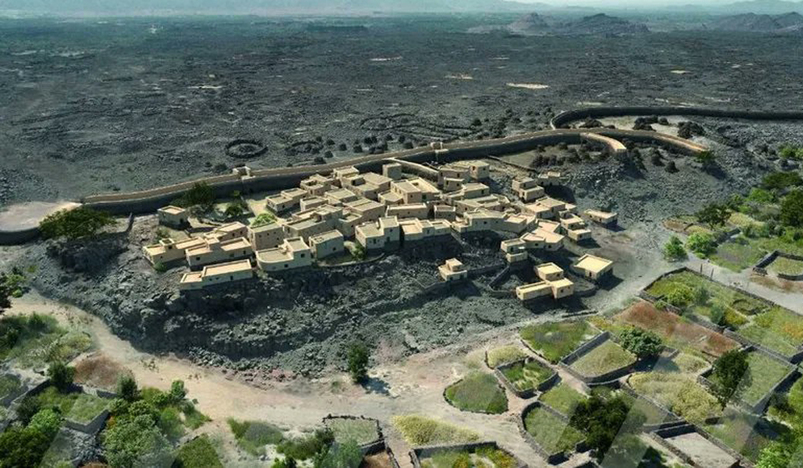
Archaeological village
The Royal Commission for the Saudi Governorate of Al-Ula announced the discovery of a unique archaeological village that dates to the Bronze Age called Al-Natah, which is located in the Khaybar Oasis west of Saudi Arabia.
Made as part of a study for a project titled Khaybar through the ages, the discovery highlights the transition from a nomadic pastoral lifestyle to settled urban life in the region during the second half of the third millennium.
The Khaybar Oasis is located on the edge of the Khaybar volcanic field, formed at the convergence of three valleys in a dry area. The village of Al-Natah was found on the northern outskirts of the oasis, buried under piles of basalt rocks for thousands of years.
The discovered village provides evidence of a clear division within the fortifications and cities, with designated areas for residential and funerary purposes. The village dates to around 24002000 BCE, with a population of 500 people within an area of 2.6 hectares. A stone wall, 15 kilometers long, surrounds the oasis for protection.
The study was conducted by the Royal Commission for the Governorate of Al-Ula in collaboration with the French Agency for AlUla development and the French National Center for Scientific Research (CNRS).
(QNA)
.jpg)
Qatar Secures Place Among the World's Top 10 Wealthiest Nations
.jpg)
Hamad International Airport Witnesses Record Increase in Passenger Traffic

Saudi Arabia: Any visa holder can now perform Umrah

What are Qatar's Labour Laws on Annual Leave?
Leave a comment